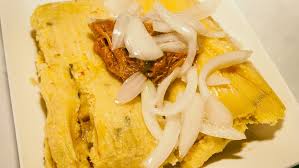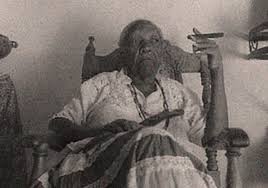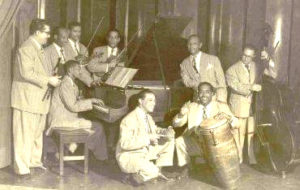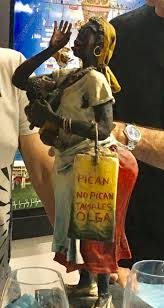 LOS TAMALITOS QUE VENDE OLGA… PICAN O NO PICAN!.. VIDEOS.
LOS TAMALITOS QUE VENDE OLGA… PICAN O NO PICAN!.. VIDEOS.
En la música popular cubana muchas obras están inspiradas o se relacionan con temas de la gastronomía. Quizás porque el cubano disfruta del sabor, la salsa y la sandunga. O quizás por ser una cultura que gira alrededor de la comida o la lucha por conseguirla.
A esto debemos sumar otro aspecto identitario importante, la jocosidad. El cubano saca lasca de cualquier cosa y eso le permite reír y encontrar un doble sentido en frases que para cualquier ciudadano, de otro lugar del mundo, no significarían nada.
Los cubanos asociamos el divertimento a beber y comer. No hay una fiesta cubana sin ron, chicharrones y tamales. Estos tres elementos aderezados con buena música conforman en el imaginario popular de la Isla los indicadores de celebración de éxito.
https://youtu.be/w7Nsorqko50
José A. Fajardo.. “Los Tamalitos de Olga”
Dentro de los tamales hay mucha variedad y esto no escapó a la atención del flautista pinareño José A. Fajardo. Sus preferidos fueron los de Olga, una mujer que cocinaba tan rico, “¡que se pasó!”.
¿Quién fue el autor de Los tamalitos de Olga?
José Fajardo (Cuba 1919 – 2001 EE. UU) fue un músico cubano, flautista, que trabajo en importantes orquestas como, por ejemplo, la de Antonio María Romeu, o la de Arcaño y sus Maravillas; y junto a destacadas figuras como Dámaso Pérez Prado.
En 1949 fundó su propia orquesta: Fajardo y sus Estrellas. A partir de 1961 se radicó en Nueva York, donde integró una nueva charanga.
Fajardo le dedicó una canción a Olga la tamalera. Si nos ceñimos a la letra podremos imaginar lo que provocaban en él aquellos deliciosos tamales, al punto que tuvo que repetir. Y cada vez que la oía pregonando, caía seducido con su dulzura. La receta de Olga lleva lo mismo que la mayoría de los tamales de todo el mundo, maíz tierno molido, carne de cerdo picada y sofrita con cebolla, ajo y pimentón dulce. Pero a la mezcla resultante ella le ponía pimienta.
De ahí la duda de José Fajardo… “Pica y no pican”. Entre nosotros, el flautista tenía el paladar enloquecido con el sabor de Olga. Y no es para menos, pues la pimienta es un ingrediente con muchos secretos.
Este sabor tan peculiar, el músico lo llevó a su terreno, dando lugar a “Los Tamalitos de Olga”, una pieza que pone a mover los pies hasta la actualidad. Ha sido interpretada por artistas como Oscar de León, Teresa García Caturla, la Orquesta Aragón, la Sonora Santiaguera, entre otros. Fueron los famosos tamalitos de Olga.
Y estos fueron los que inspiraron a José A. Fajardo que están basados en el caso real de una mujer cubana vendedora de tamales.
 THE TAMALITOS THAT OLGA SELLS…PICAN OR NOT PICAN! .. VIDEOS.
THE TAMALITOS THAT OLGA SELLS…PICAN OR NOT PICAN! .. VIDEOS.
In Cuban popular music, many works are inspired or related to themes of gastronomy. Maybe because the Cuban enjoys the flavor, the sauce, and the sandunga. Or maybe for being a culture that revolves around food or the struggle to get it.
To this, we must add another important identity aspect, jocosity. The Cuban removes lasca of anything and that allows him to laugh and find a double meaning in phrases that for any citizen, from another place in the world, would not mean anything.
We Cubans associate divertimento to drink and eat. There is not a Cuban party without rum, pork rinds, and tamales. These three elements adorned with good music conform in the popular imagination of the Island the indicators of a celebration of success.
Within the tamales, there is a lot of variety and this did not escape the attention of the Pied Piper José A. Fajardo. His favorites were those of Olga, a woman who cooked so rich, “what happened!”.
Who was the author of Olga’s Tamalitos?
José Fajardo (Cuba 1919 – 2001 USA) was a Cuban musician, flutist, who worked in important orchestras such as, for example, that of Antonio María Romeu, or that of Arcaño and his Maravillas; and together with outstanding figures such as Dámaso Pérez Prado.
In 1949 he founded his own orchestra: Fajardo y sus Estrellas. From 1961 he settled in New York, where he joined a new charanga.
Fajardo dedicated a song to Olga the tamalera. If we stick to the letter we can imagine what caused those delicious tamales in him, to the point that he had to repeat. And every time I heard her proclaiming, he fell seduced by her sweetness. Olga’s recipe carries the same as most tamales from around the world, tender ground corn, minced pork and sautéed with onion, garlic, and sweet paprika. But to the resulting mixture, she put pepper on it.
Hence the doubt of José Fajardo … “Pica y no pica”. Among us, the flutist had the palate crazed with the taste of Olga. And no wonder, because pepper is an ingredient with many secrets.
This peculiar flavor, the musician took him to his land, giving rise to “Los Tamalitos de Olga”, a piece that sets his feet moving to the present. It has been interpreted by artists such as Oscar de León, Teresa García Caturla, Orquesta Aragón, Sonora Santiaguera, among others. They were the famous tamalitos of Olga.
And these were the ones that inspired José A. Fajardo that are based on the real case of a Cuban woman selling tamales.
Agencies/ CiberCuba/ Gretchen Schez/ Internet Photos/ YouTube/ Arnoldo Varona/ www.TheCubanHistory.com
THE CUBAN HISTORY, HOLLYWOOD.



 < The TAMALITOS that Olga Sells... Pican or No Pican! . VIDEOS.
< The TAMALITOS that Olga Sells... Pican or No Pican! . VIDEOS.




